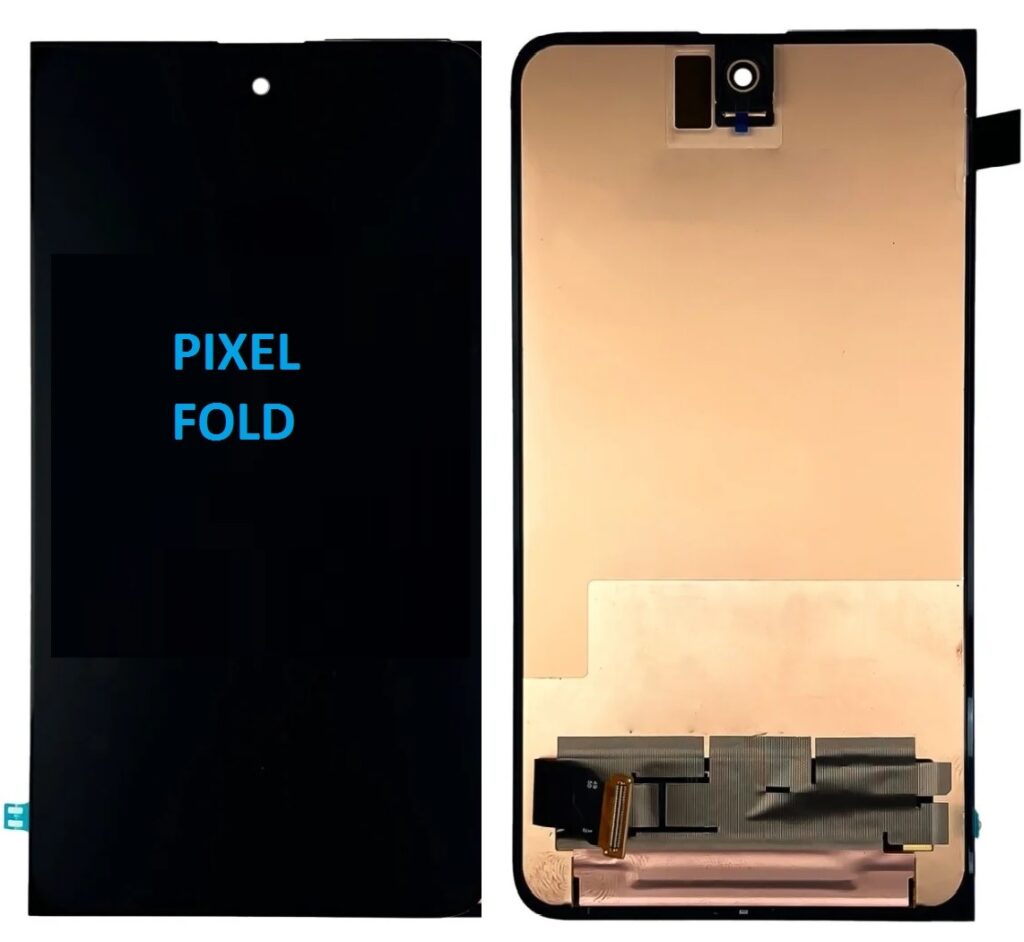
The Google Pixel Fold is Google’s first foldable smartphone, marking a significant entry into the foldable market. It was officially released in 2023, offering a unique combination of cutting-edge technology and Google’s software expertise. Here’s a detailed breakdown of its screen sizes and other key features:
1. External Screen (Cover Display)
The external screen of the Google Pixel Fold is a 5.8-inch AMOLED display with an aspect ratio of 17.4:9. This display serves as the main screen when the device is folded and can be used like a traditional smartphone. Despite being a secondary screen, it offers a decent amount of real estate for regular phone tasks, such as browsing, texting, and checking notifications.
- Resolution: 2092 x 1080 pixels
- PPI (Pixels Per Inch): 408
- Refresh Rate: 120 Hz
- Display Type: AMOLED, which provides vibrant colors and deep blacks.
The external screen is narrower than the average smartphone screen, making it easier to handle with one hand but may require some adjustments for certain apps or browsing.
2. Main Screen (Foldable Inner Display)
When the phone is unfolded, the main screen is revealed — a 7.6-inch AMOLED display. This is where the Pixel Fold shines, offering the large display typically seen in tablets but in a foldable form factor. It allows for multitasking, immersive video watching, and productivity tasks on a bigger canvas.
- Resolution: 2208 x 1840 pixels
- PPI: 400
- Aspect Ratio: 6:5 (compared to a traditional 16:9 display), which is slightly more square than typical widescreen displays.
- Refresh Rate: 120 Hz, offering smooth scrolling and responsiveness.
3. Key Features of the Display:
- Ultra-thin Glass (UTG): The inner screen is made from a special ultra-thin glass that allows it to fold without cracking, though the display is still somewhat susceptible to damage.
- Crease: Like most foldable devices, the Pixel Fold has a visible crease in the center where the screen folds. However, Google has designed the foldable display to minimize the impact of this crease on usability, but it remains a characteristic feature of foldable devices.
- Foldable Form Factor: The hinge mechanism of the Pixel Fold allows it to fold into a compact, pocketable size. The hinge is also designed to minimize dust and debris from entering the mechanism, which could damage the screen over time.
- Brightness: The Pixel Fold’s display can reach high brightness levels, making it usable even in direct sunlight. The external screen supports a peak brightness of 1,000 nits, while the inner display can hit 1,200 nits in peak brightness.
4. Multitasking and Software Features:
Google’s software integration is one of the standout features of the Pixel Fold. The Android 13 operating system is optimized for foldable devices, offering an experience tailored to larger screens. Some key software enhancements include:
- Split-Screen Mode: You can run two apps side by side on the larger main screen, greatly enhancing productivity.
- App Continuity: Apps transition seamlessly between the external and internal displays. For instance, if you’re reading a message on the external display and then unfold the device, the message will continue on the larger screen.
- Taskbar: The main screen features a taskbar for quick access to apps, providing a more desktop-like experience when the device is unfolded.
- Floating Apps: Apps can be resized or made to float over the main screen, allowing for flexible multitasking.
5. Other Key Specifications:
- Processor: The Pixel Fold is powered by Google’s Tensor G2 chip, providing high performance while optimizing the use of artificial intelligence and machine learning for tasks such as photography, security, and real-time translation.
- RAM and Storage: The device comes with 12 GB of RAM and 256 GB, 512 GB, or 1 TB of internal storage, offering a good amount of memory and space for apps, media, and files.
- Camera System: The Pixel Fold features a powerful triple-camera setup:
- Primary: 48 MP wide sensor
- Ultra-wide: 10.8 MP sensor
- Telephoto: 10.8 MP with 5x optical zoom
- The front camera (external) is 9.5 MP, and the internal camera is a 10.8 MP sensor, offering great quality for selfies and video calls.
- Battery: The Pixel Fold has a 4,821 mAh battery, offering a full day of use on a single charge, thanks to optimization from the Tensor chip and software improvements.
- Fast Charging: It supports fast charging up to 30W, allowing you to charge the device relatively quickly.
- Water Resistance: It has an IPX8 rating, which means it is water-resistant but not dust-resistant, so it should be fine if splashed with water but might not handle dust as well.
6. Design and Build Quality:
- Dimensions (Folded): The Pixel Fold measures 79.8 x 160.5 x 12.1 mm, and it’s quite thick compared to traditional smartphones, though it becomes much thinner when unfolded.
- Dimensions (Unfolded): When fully opened, the device measures 158.7 x 139.7 x 5.8 mm, making it closer to a tablet form factor but still portable.
- Materials: The Pixel Fold uses a combination of glass and metal in its construction, giving it a premium feel but also making it a little heavy compared to traditional smartphones.
7. Pricing and Availability:
The Pixel Fold comes at a premium price point, as foldable devices generally do, with a starting price of around $1,799 in the U.S. for the 256 GB model. Prices increase for higher storage options.
Conclusion:
The Google Pixel Fold offers a groundbreaking design that merges the portability of a smartphone with the versatility of a tablet, making it an excellent option for users who need the best of both worlds. While it’s a pricey investment, its large inner screen, powerful cameras, and innovative software optimizations make it one of the top contenders in the foldable phone market.